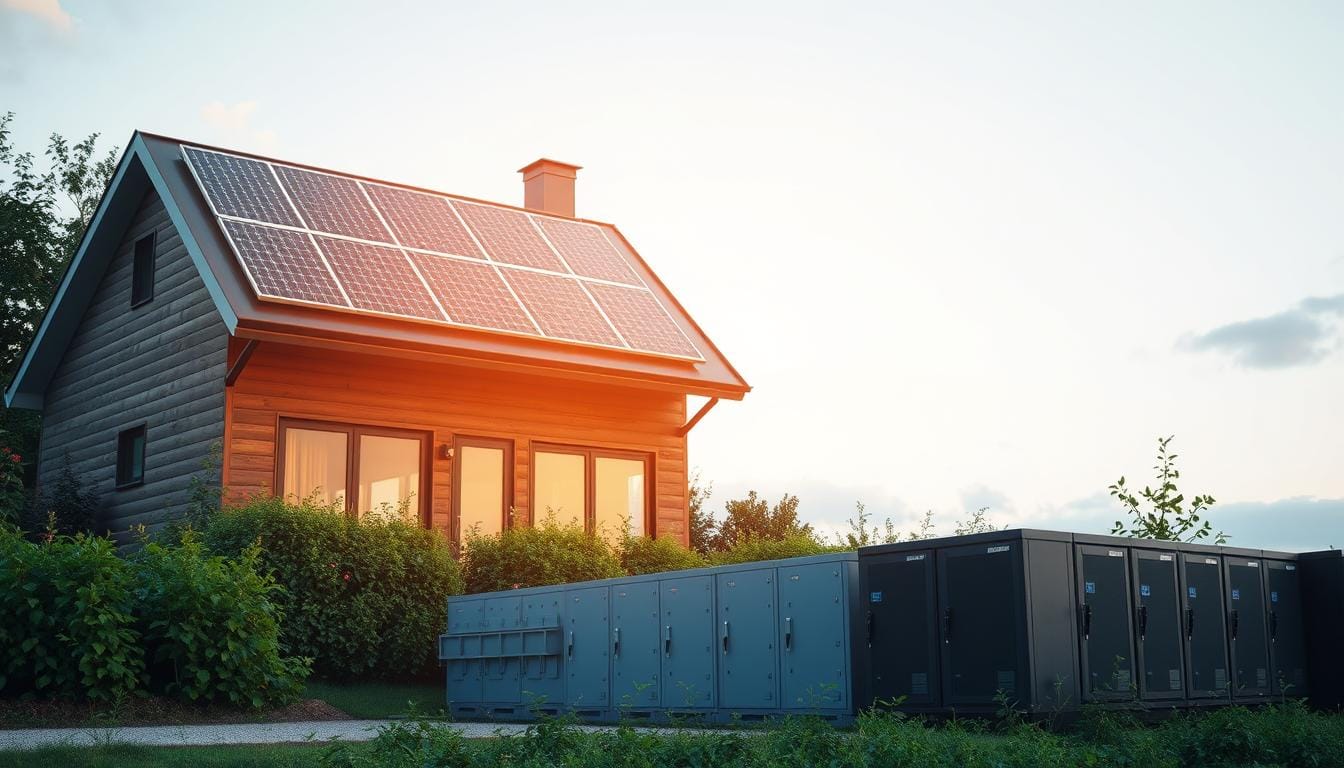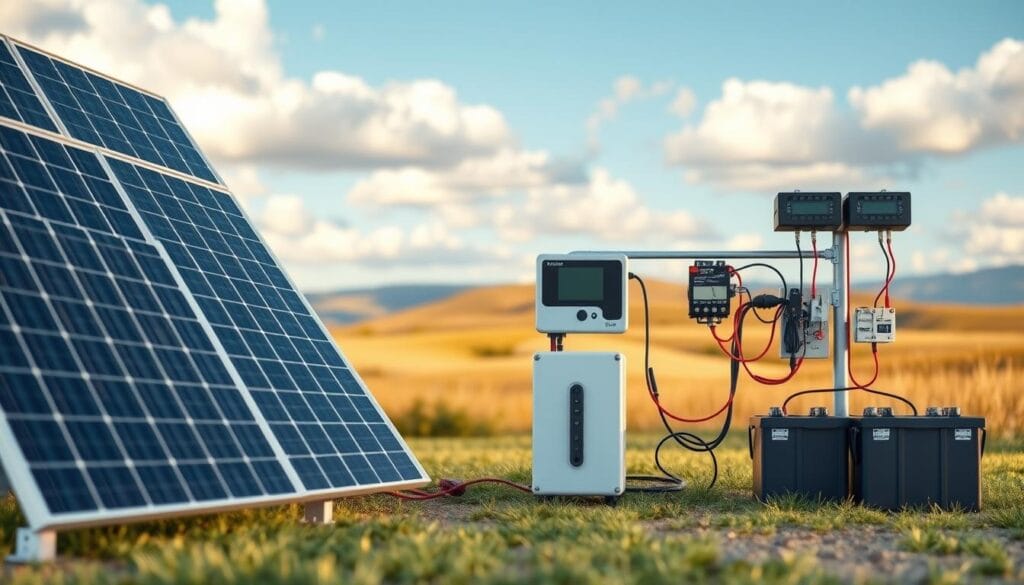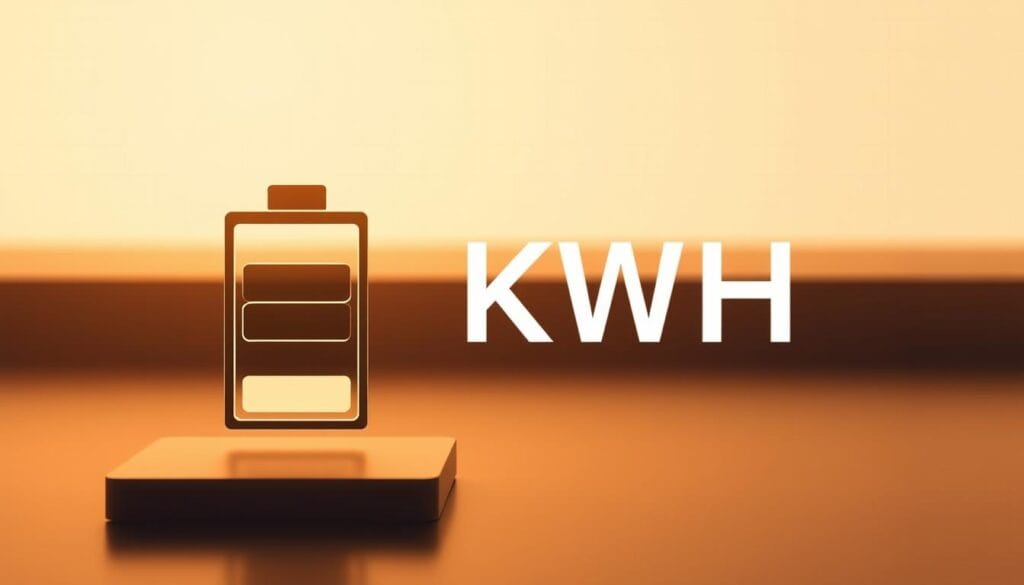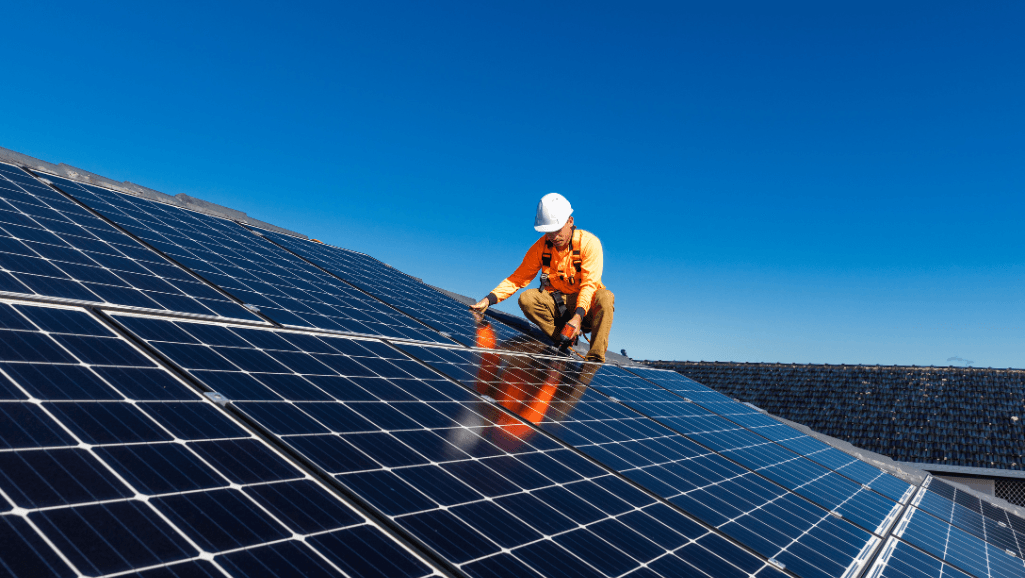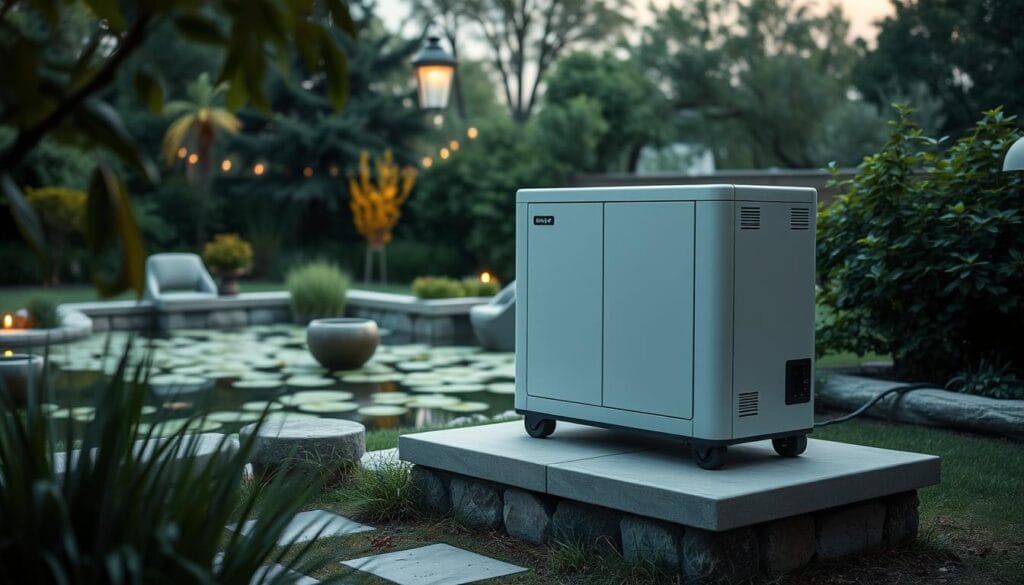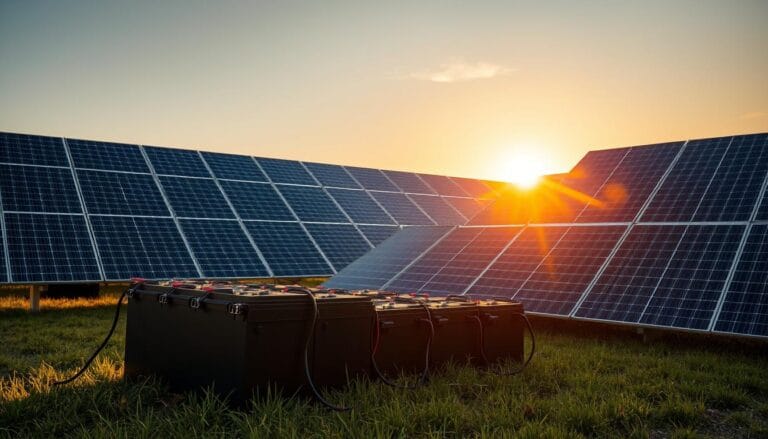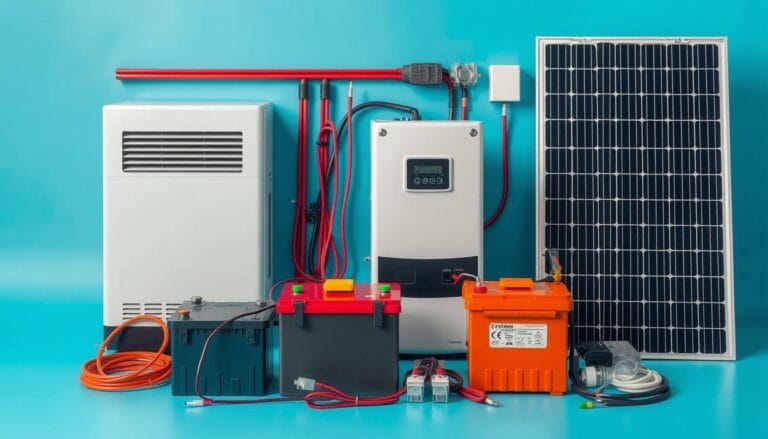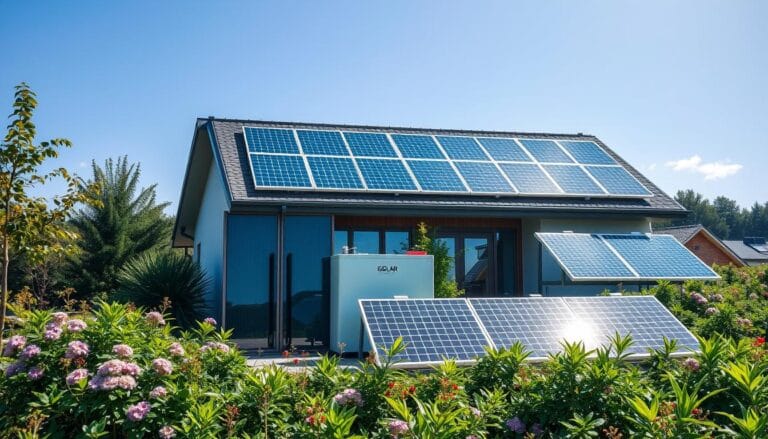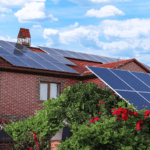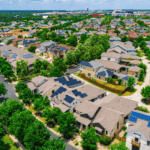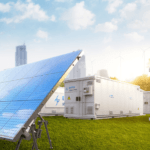Protect your home and family with a clean, quiet backup system that kicks in during outages and trims regular energy costs. Modern systems like Goal Zero’s Yeti PRO lineup and the Yeti X with Home Integration Kit offer LiFePO4 cells and whole-circuit support for essential loads.
For Texas homeowners, membership-style plans start at 8.5¢/kWh plus delivery, with a $695 install and $19/month for automatic whole-home backup up to 48 hours. BLUETTI’s modular AC500/AC300 gear adds fast UPS response (~20 ms), split-phase output up to 10,000 W, and expandability past 30 kWh for larger needs.
Choose a path that fits your budget: low-upfront memberships, modular systems to shop and scale, or hybrid setups that pair with solar panels or run independently. UL-certified hardware, HOA-friendly installs near the meter, and 24/7 app monitoring make installation and use straightforward.
This approach removes fumes and noise from traditional generators, gives portable solar and power station options for flexibility, and helps you lower kWh costs by interacting smartly with the grid.
Key Takeaways
- Battery Powered House.
- Modern home backup delivers quiet, clean power without a fuel generator.
- Transparent pricing: membership plans or modular purchases to match budgets.
- Brands like Goal Zero and BLUETTI offer UL-certified, expandable systems.
- Systems integrate with solar panels or operate standalone for instant backup.
- Fast UPS response and app monitoring provide reliable protection during outages.
Power Your Home with Confidence: Whole-Home Backup You Can Trust
When the lights go out, modern whole-home backup steps in within milliseconds so life keeps moving. Automatic switchover means no manual steps during a power outage—your systems shift to stored energy instantly.
Stay on during power outages with seamless, automatic switchover
Rapid UPS response (around 20 ms) prevents resets and data loss for sensitive electronics. This fast transfer keeps communications, refrigeration, and medical devices running without interruption.
Keep essential devices and entire-home circuits running
Choose the right unit and circuit configuration to determine which loads remain active and how long they run. Robust output delivers pure sine wave quality so lights and appliances run smoothly.
Transparent price paths help you plan: fixed plans starting at 8.5¢/kWh plus delivery, a $695 install, and a $19/month membership option deliver predictable costs for reliable protection.
Monitor status anytime with a mobile app to check runtime, confirm home running state, and get alerts day or night. Modern backup systems run quietly and cleanly—no fuel, no exhaust, just peace of mind.
What Is a Battery Powered House?
A dedicated on-site energy system gives homeowners instant, quiet backup and the option to export surplus power. This setup combines storage, an inverter, controls, and automatic transfer switching to keep essential devices running when the grid fails.
From energy storage to backup systems: how home battery backup fits in
Define it simply: a home that uses a dedicated unit to store energy and deliver on-demand backup when the grid goes down.
Integration happens at the electrical panel so critical circuits run without noisy, fuel-based maintenance. Systems work standalone or with solar; grid-tied setups can export excess energy to offset your price per kWh.
- Core components: batteries, inverter, control electronics, and automatic transfer switch.
- Protection: BMS and pure sine wave output safeguard sensitive devices.
- Scalability: start with one unit and add capacity as needs and budget grow.
Everyday use includes time-of-use savings and resiliency, making backup systems a practical solution for many U.S. homeowners.
How a Battery Powered House Works in the Present Day
Today’s systems blend solar generation, smart storage, and software to keep circuits running and costs low.
Solar panels, batteries, inverters, and the grid—working together
Solar panels convert sunlight into DC electricity. That DC either charges storage cells or flows to an inverter that makes AC output for your home.
Grid-tied systems can export excess energy or import when needed, letting you lower your kwh bills by selling back or drawing off-peak.
AC vs. DC coupling and time-of-use optimization
AC coupling uses the inverter between panels and storage; DC coupling sends panel DC directly to chargers. Each method affects efficiency and expansion paths.
AC is flexible for add-ons, while DC can be slightly more efficient for new solar installs. Smart controls charge during low-price hours and discharge on peak to reduce price impact.
Automatic UPS behavior during an outage
When the grid drops, fast UPS modes switch in ~20 ms so sensitive devices keep running. Inverters and cells coordinate to hold stable voltage and frequency.
- Modular platforms scale output—some offer 5,000 W (10,000 W split phase) and expandable capacity for more hours of backup.
- Daily operation smooths output quality, supports essential loads, and helps manage demand charges.
- Software balances charging, discharge, and grid interaction to protect reserve capacity for outages while unlocking savings.
Learn more about energy storage in this storage guide or get a simple solar primer at Solar for Dummies.
Battery Powered House: Our Service Approach for U.S. Homes
Our approach begins with a one-on-one consult to learn how your home uses power and what backup you truly need.
We right-size systems by analyzing usage patterns and outage risk so the recommended unit fits performance and price goals.
We manage permitting and code-compliant installation near the electric meter. Licensed, bonded, and insured electricians handle placement and activation with minimal disruption.
- Turnkey delivery: assessment, permitting, installation, activation, and ongoing support.
- Clear price paths: options across capacities so you know cost and expected runtime up front.
- Shop with guidance: curated choices from whole-home to modular units to match needs.
Your project lead stays your single point of contact from first call to switch-on. We even coordinate seamless provider switches in Texas and can cover up to $250 in cancellation fees.
Professional workmanship and UL-certified hardware protect property and performance, and our service model scales from essential circuits to robust whole-home backup for larger properties.
Systems & Technologies We Offer for Backup Power
Choose systems that balance long lifespan, strong output, and easy expandability. Our curated lineup fits needs from essential circuits to whole-home coverage while keeping installation simple and price paths clear.
Yeti PRO with LiFePO4
The Yeti PRO power station series uses LiFePO4 chemistry for long cycle life and stable output. These units deliver dependable home battery performance and are ideal when you want durability and low maintenance.
Yeti X with Home Integration Kit
The Yeti X plus HIK provides essential-circuit backup at a lower price and lighter weight. It’s a practical entry point for homes that need key circuits protected without full-system cost.
Modular Options: BLUETTI AC300/AC500
BLUETTI’s modular families scale by adding batteries and units. Expect up to 5,000 W output (10,000 W split phase), ~20 ms UPS response, PV priority, and rapid charging for fast recovery.
- Pure sine wave output and strong surge handling protect sensitive gear.
- Accessory cables and integration panels simplify safe connection to your panel.
- UL-certified packs, robust BMS safeguards, and shop-ready kits make upgrades easy.
Shop curated kits to match runtime, output, and price so you get the best value for your home and backup goals.
Choosing Capacity and Output: kWh, Watts, and Hours of Runtime
Right-sizing capacity and output starts with a simple question: what do you need to run and for how long? Begin by listing critical circuits—fridge, modem, medical gear, HVAC, and well pumps—and note each device’s watt draw.
Right-sizing battery capacity to your loads and outage length
Calculate kwh by adding watts for your critical loads and converting to kilowatts. Multiply that by your desired hours of runtime to get required capacity.
Example: 3 kW of loads for 10 hours = 30 kWh of usable capacity. Balance price and performance; larger capacity raises runtime but also increases unit size and cost.
Split-phase and whole-home options for higher output
Output rating determines what runs at once. A BLUETTI AC500-class system supports up to 5,000 W continuous (10,000 W split phase) and expands past 20 kWh with extra packs.
Use split-phase for 240V appliances and whole-home startup surges like HVAC or pumps. Smaller systems suit essential circuits only.
- Measure daily use: check meters or bills to estimate kwh per day.
- Identify peaks: note startup surges and continuous loads to size inverter output correctly.
- Start modular: choose expandable systems so you can add capacity as needs change.
Get runtime estimates based on real usage so you buy once—and buy right.
Solar-Ready Solutions: Panels, Solar Generators, and Portable Power
PV-ready systems let your unit prioritize sun power before drawing from the grid. This approach refuels stored energy with clean, low-cost generation and reduces your peak price impact.
Harnessing solar energy with PV priority and peak shaving
PV priority lets panels feed the inverter first, charging the pack up to its capacity and lowering grid draw. Peak shaving schedules discharge during high-rate periods so you pay less when prices spike.
- How panels help: roof arrays supply steady daily charging for long-term savings.
- When a solar generator fits: portable solar plus a power station makes sense for rentals, camping, or staged buys.
- Sizing tips: match panel VOC and current to the controller, plan cable runs, and target daily output to refill the unit after typical use.
Shop incrementally with plug-and-play bundles to add panels over time. Even without a roof array, portable solar keeps systems ready during extended outages while balancing savings and always-on backup readiness.
Installation, Permits, and Compliance—Handled End to End
From the site visit to final inspection, we handle permits and wiring for seamless system activation.
Site assessment and safe placement
We inspect your property to pick a spot near the electric meter along an exterior wall. The assessment checks clearances, routing, and optimal connections so the unit fits safely and neatly.
Our crew plans conduit runs, ventilation, and aesthetic placement to keep your home tidy and code-compliant.
Permitting, HOA rules, and professional install
We coordinate permits and inspections with local authorities so you don’t run extra errands. Licensed, bonded electricians work under a Master Electrician to ensure consistent workmanship and safety.
In Texas, Property Code §202.010 protects the right to install solar energy devices—including home battery backup—so HOA delays are rare.
- Clear timeline and site access expectations so installs finish quickly.
- Transparent price guidance for installation work, panel tweaks, or wiring adjustments.
- We help you shop compatible accessories and integration kits to simplify connections.
Before we leave, your backup system is commissioned, validated, and set up for remote monitoring so you can trust its power and performance from day one.
Safety First: UL Certifications, LiFePO4 Chemistry, and BMS Protections
Certified hardware and smart chemistry reduce risk while delivering steady home power. Safety begins with UL listings that verify components meet strict fire and electrical standards for residential installs.
Why certifications and chemistry matter
UL certification confirms compliant enclosure ratings, grounding, and safe transfer switching to the grid. That matters when a unit ties into your meter and panel.
LiFePO4 cells add thermal stability and long cycle life. Many BLUETTI packs are rated for 3,000+ cycles, so you get dependable energy over years without frequent replacement.
Active protections and clean output
- Active fire suppression and sealed enclosures reduce thermal risks on-site.
- Robust BMS monitors temperature, voltage, and current in real time to prevent faults.
- Pure sine wave output protects sensitive devices like medical gear and routers.
Installers follow clearance and ventilation rules so the unit runs cool and code-compliant. Automatic transfer switches handle outages safely, keeping your backup system isolated from the grid when needed.
Routine health checks and firmware updates keep performance steady and can improve price-to-value over time. Choose proven brands and certified installers to maximize safety, reliability, and long-term home value.
Smart Savings: Pricing Models, kWh Rates, and Grid Interaction
Transparent rate plans make your monthly costs predictable and protect you from sudden spikes. Base members start at 8.5¢/kWh plus delivery with renewals guaranteed below market averages, so long-term price stability is built in.
Fixed pricing and predictable bills
Fixed kwh pricing gives clarity: you know the per-kwh price up front and can budget confidently. Installation fees range from $695 to $995 depending on plan and zip code, and those one-time costs compare favorably versus repeated generator fuel and maintenance over a few years.
Earn by helping the grid
Your unit can discharge during demand peaks to support the grid. That service generates revenue, and Base passes savings to members through lower monthly bills and guaranteed below-market renewals.
Solar export credits and scheduling
If you have solar, Base buys excess at 3¢/kWh plus a real-time wholesale bonus. That integrates with charge schedules so the system tops up when rates are low and exports when it’s valuable.
- How to shop: pick a plan, then select a unit sized to match desired runtime and outage protection.
- Hours examples: a 10 kWh usable pack can supply essential loads for several hours; larger capacities extend coverage and reduce monthly risk.
- Track and tune: use the app to monitor energy use, savings, and performance trends so you can adjust settings over time.
Backup power remains reserved for outages even when your system participates in grid balancing. For details on compatible options and to shop curated battery backup systems, see our guide and pick the plan that fits your home.
Texas-Focused Home Backup: Reliable Power During Outages
Texans can count on reliable home backup during storms with systems sized for local outage patterns.
Up to 48 hours of protection: Base installs 25–50 kWh packs that aim to cover whole-home loads for up to 48 hours depending on conservation and what you run. Smaller loads extend runtime; smart settings help you prioritize critical devices and stretch hours when storms hit.
Seamless switching and nonstop monitoring
Switch providers easily—Base handles the paperwork and covers up to $250 in cancellation fees so price friction is low.
- 24/7 app monitoring: view unit state, home power flow, and alerts from your phone.
- Professional install: the system sits by the meter and crews manage permits and safe interconnection to the grid.
- Real resiliency: members report staying online through recent Texas outages, proving everyday reliability.
Assess your needs to pick the right capacity and balance runtime, budget, and resilience. The right plan keeps your family safe and your devices running when outage risk is highest.
Compare to Generators: Quiet, Emission-Free Backup vs. Fuel-Based Units
Modern clean systems deliver instant switchover and steady output, making them a practical alternative to traditional fuel generators.
Members often say they chose emission-free backup for reliability and the lack of noise and fumes. One user noted life stayed calm during a storm because the system started automatically.
“No loud startup, no fuel runs—just steady power for our fridge and modem.”
- Total ownership: clean units need no refueling or engine maintenance, so long-term price and hassle drop.
- Output & protection: modern units deliver ample power for whole-home or essential loads and protect sensitive devices.
- Safety & comfort: emission-free operation improves indoor air quality and is friendlier to neighbors than noisy gensets.
- Convenience: automatic switchover beats manual start, extension cords, and refueling in bad weather.
- Value: grid-integrated systems can lower bills—something most generators cannot do.
BLUETTI and others highlight quiet operation (<40 dB) and split-phase output options so a properly sized unit matches or exceeds genset resilience. For many homeowners, this clean solution balances comfort, reliability, and long-term price advantages over fuel-based generators.
Portable Power Stations and Expansion Batteries for Flexible Use
Take your home system further by detaching a compact unit for weekend trips and emergency grab-and-go. These portable power stations add flexibility without buying a second system.
Detachable units for camping, RVs, and events
Modular designs like BLUETTI let you remove a unit to run RV outlets or event AV. Expect AC output up to 5,000 W and split-phase options to 10,000 W for heavier loads.
- Use NEMA adapters and robust cable sets for safe hookups to RVs, generators, and tools.
- Portable solar panels and folding kits top up capacity during long trips or outages.
- Shop bundles that pair panels, cables, and protective cases so you’re ready on day one.
Plan capacity by matching trip length and devices: a weekend needs far less capacity than multi-day boondocking. These units also serve as a short-term backup at home for targeted circuits, giving extra resilience at a sensible price.
Real-World Use Cases: From Essential Circuits to Whole-Home Running
Real families use backup systems in different ways—some protect a single ventilator, others keep an entire home running for days.
Essential circuits often include medical devices, refrigeration, internet, and home office gear. A small installation can keep these devices online for hours, protecting health, food, and work.
Whole-home scenarios and sizing
For whole-home running during multi-day events, plan for tens of kwh and matching battery capacity so HVAC, cooking, and laundry work. BLUETTI cites ~20 ms UPS response to protect routers and VOIP, avoiding work interruptions.
- Nighttime-only use stretches hours by shifting heavy loads to lower-demand periods.
- Scale as you go: add packs to extend runtime or support new appliances.
- Budget options: choose a smaller unit to keep essential circuits and stay within a clear price plan.
Make a prioritized load list so your system aligns with what matters most. Members report staying online through Texas events without needing a generator—proof that right-sizing delivers real resilience.
From Quote to Switch-On: Our Simple Process
Upload simple site photos and we’ll return a clear proposal with recommended equipment and installation scope. This keeps early steps fast and accurate so you can compare price and runtime without surprises.
Photo-based assessment, scheduled install, and system activation
Step 1: Send photos of your meter and panel. Our engineers size kwh needs, pick the right unit, and create a precise price quote.
Step 2: Review a proposal that lists the unit, accessories, and installation timeline. We handle permits and coordinate licensed crews to complete wiring and testing.
Step 3: On activation day we set up the app, verify automatic backup behavior, and walk you through tips to maximize savings and resilience.
- Transparent price breakdown: equipment, installation ($695–$995), and membership from $19/month with energy at 8.5¢/kWh plus delivery.
- Shop upgrades later — add capacity, solar, or extra circuits without redoing the whole install.
- Ongoing support and clear timelines so your home stays protected and informed.
Ready to compare options? See our guidance for simple home savings and find a plan that fits your budget and life: simple home savings.
Conclusion
Smart, modular systems let you scale capacity and control output so your home stays comfortable through storms. These proven setups pair LiFePO4 packs, UL-certified hardware, and app monitoring to deliver clean, quiet power and reliable backup when you need it most.
Choose a unit sized for your loads and budget so capacity matches real needs. Professional installs, clear price paths, and ongoing support keep performance steady and maintenance simple.
Shop curated options—from whole-home installs to a portable solar power station—so you get the right mix of resilience and savings. Grid-aware operation and solar compatibility can cut bills while preserving standby readiness.
Ready for a custom quote? Get one today and take the first step toward dependable home power and lasting peace of mind.


